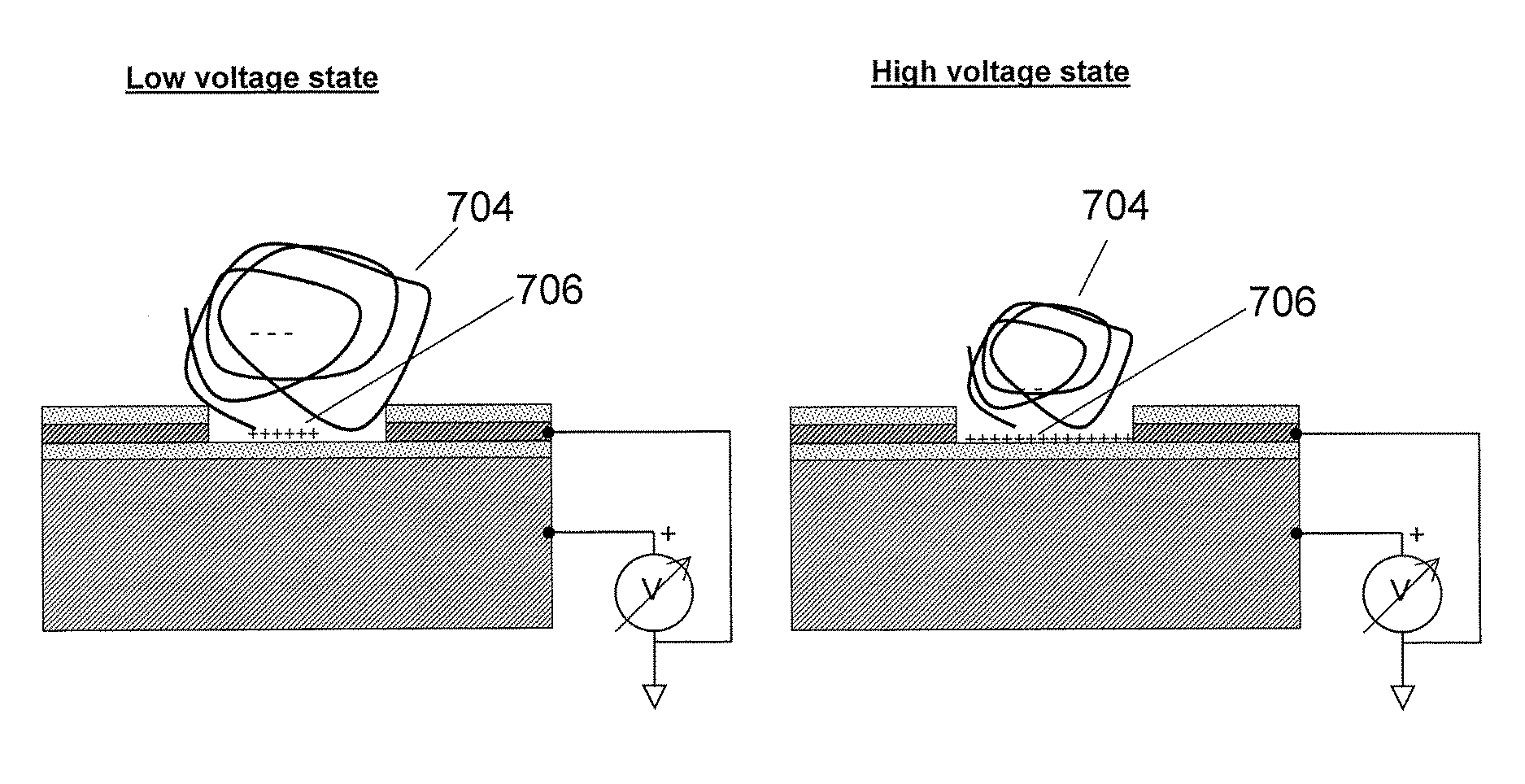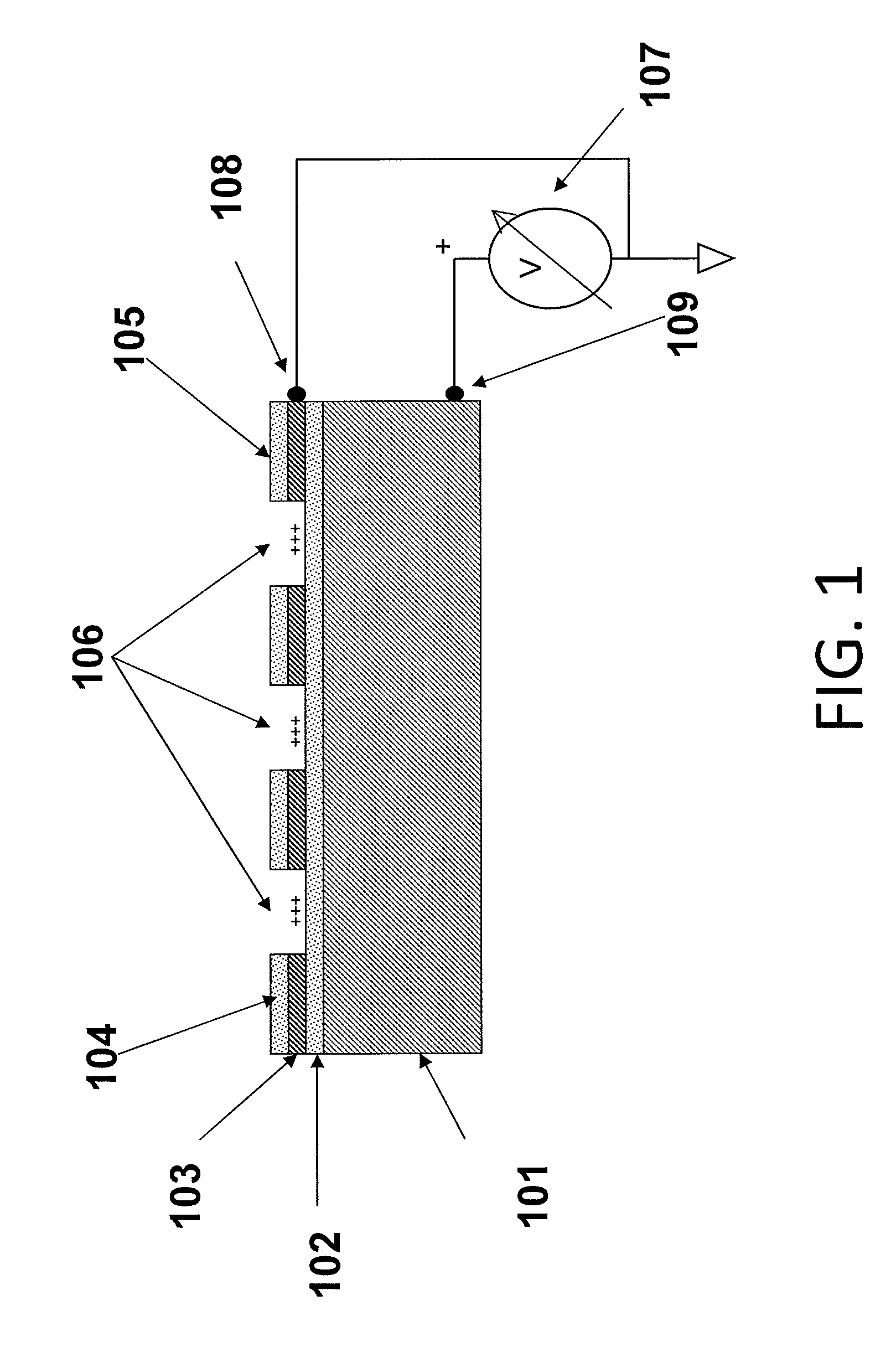Method for nucleic acid detection using voltage enhancement
a nucleic acid and voltage enhancement technology, applied in combinational chemistry, biochemistry apparatus and processes, library screening, etc., can solve the problems of inability to vary the attractive force of the binding of biological molecules to the surface, limited efficiency of biological sample loading to the array, and inability to achieve discrete analysis of each macromolecule.
- Summary
- Abstract
- Description
- Claims
- Application Information
AI Technical Summary
Benefits of technology
Problems solved by technology
Method used
Image
Examples
Embodiment Construction
[0067]The substrates of the present invention may comprise a plurality of electrically isolated regions on a substrate material, called attachment sites, in which individual nucleic acid macromolecules can be disposed. The electrical isolation of these active regions is typically accomplished by thermal oxidation of a conductive layer, e.g., silicon, titanium, aluminum, or another appropriate conductive layer, forming the active regions. These attachment sites can be associated with a single electrode, or with multiple electrodes to allow independent control of discrete portions of a substrate.
[0068]FIG. 1 is a schematic drawing illustrating a side view of a substrate for use in multiple embodiments of the invention. The substrate of this device comprises the specific elements: a conductive material 101, including but not limited to silicon, aluminum, titanium, or aluminum and / or titanium coated on silicon; a dielectric layer 102, such as an oxide disposed on the conductive layer, a...
PUM
| Property | Measurement | Unit |
|---|---|---|
| distance | aaaaa | aaaaa |
| size | aaaaa | aaaaa |
| size | aaaaa | aaaaa |
Abstract
Description
Claims
Application Information
 Login to View More
Login to View More - R&D
- Intellectual Property
- Life Sciences
- Materials
- Tech Scout
- Unparalleled Data Quality
- Higher Quality Content
- 60% Fewer Hallucinations
Browse by: Latest US Patents, China's latest patents, Technical Efficacy Thesaurus, Application Domain, Technology Topic, Popular Technical Reports.
© 2025 PatSnap. All rights reserved.Legal|Privacy policy|Modern Slavery Act Transparency Statement|Sitemap|About US| Contact US: help@patsnap.com



